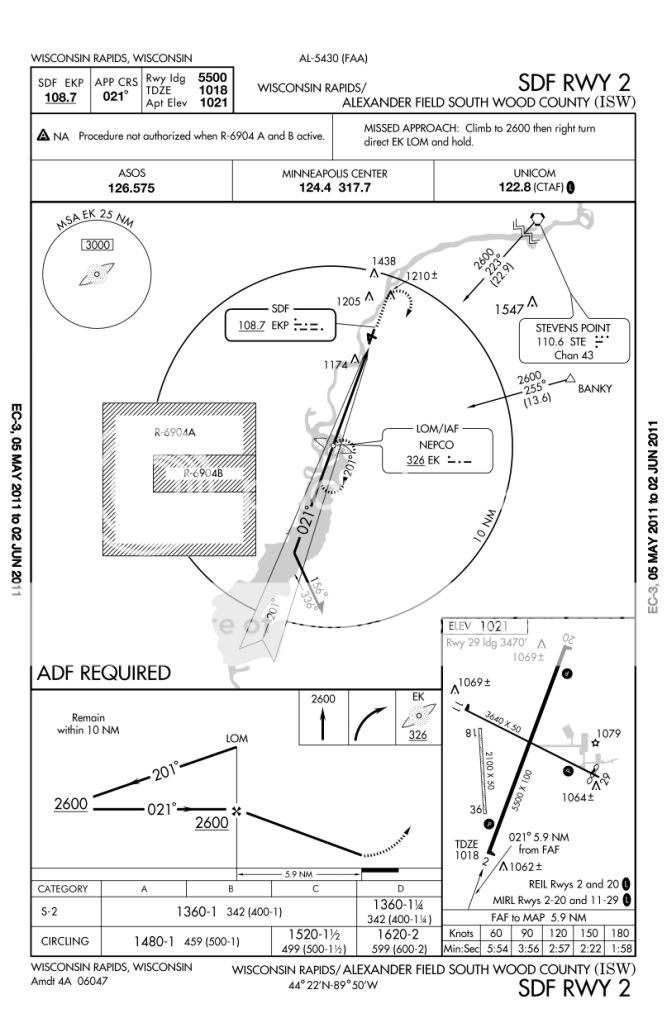jxdrl
Pre-takeoff checklist
I was just looking up this airport in case I fly there to pick up a truck and noticed they had an SDF approach. I know it's not anything special but I have never flown one and would like to if I go there.
If I remember everything correctly (rusty IFR), the ADF required on the planview is there to be able to fly the procedure from enroute (BANKY) to terminal without vectors from ATC and also for the missed approach.
If your ADF receiver is INOP, could you then get vectors to final and use Stevens point VOR and DME at 22.9 miles to determine your FAF and then fly the approach? Or just use the OM at NEPCO? An alternate missed would be required.
Could you also just fly the 223 radial outbound from STE for 22.9 miles/intercept the approach course (backcourse), fly the procedure turn and then the approach?

If I remember everything correctly (rusty IFR), the ADF required on the planview is there to be able to fly the procedure from enroute (BANKY) to terminal without vectors from ATC and also for the missed approach.
If your ADF receiver is INOP, could you then get vectors to final and use Stevens point VOR and DME at 22.9 miles to determine your FAF and then fly the approach? Or just use the OM at NEPCO? An alternate missed would be required.
Could you also just fly the 223 radial outbound from STE for 22.9 miles/intercept the approach course (backcourse), fly the procedure turn and then the approach?


